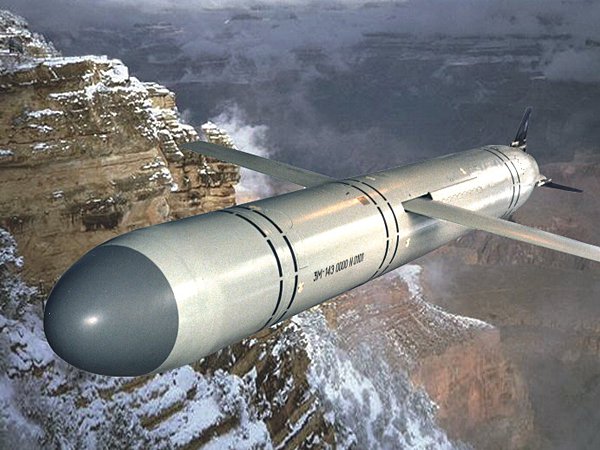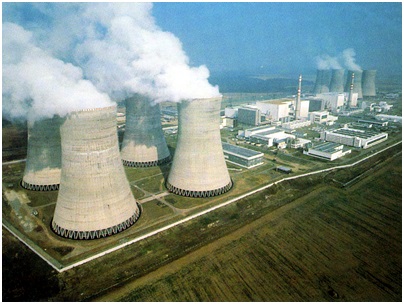
Blog
-
Geiger Readings for Dec 10, 2015
Ambient office = 81 nanosieverts per hourAmbient outside = 96 nanosieverts per hourSoil exposed to rain water = 97 nanosieverts per hourBartlett pear from Central Market = 87 nanosieverts per hourTap water = 109 nanosieverts per hourFiltered water = 96 nanosieverts per hour -
Nuclear Weapons 177 – Russian President Putin Hints at Possible Use of Tactical Nuclear Weapons Against Terrorists
There is a great deal of discussion internationally about how to deal with ISIS. The U.S. has been bombing them for years with little to show for it. Now Russia is in Syria at the invitation of President Assad to help them fight ISIS. The Russians have moved men and equipment to Syria and are conducting bombing raids. After the recent terrorist attacks in Paris, the French have stepped up their bombing runs in Syria and the British have joined in with their air force. The problem with all the bombing is that ISIS is very good at blending in with the general population and civilian infrastructure. Supply dumps and military installations can be found and bombed but when the fighters are living with the civilians and they are storing munitions in hospital basements, bombing is difficult to target and causes many civilian deaths with little actual effect on the ISIS military capacity.
The Russian military is known to be brutal in dealing with rebels and terrorists. They have powerful weapons that they are willing to deploy without particular concern about civilian deaths and destroyed infrastructure. Russian President Putin has been threatening to use tactical nuclear weapons if Russia is losing in a conventional war with NATO in Eastern Europe. Russia has been flying nuclear bombers into the airspace of other countries and sailing submarines with nuclear weapons into the territorial waters of other countries in the past several years. Russian officials and high ranking military officers have been saying privately that Putin would consider exploding a small nuclear device in a conventional conflict simply for the purpose of intimidating his enemy.
The Russians have been firing Kalibr cruise missiles from Russian submarines in the Caspian Sea to hit ISIS targets in Syria. At a recent military briefing in the Kremlin, Putin mentioned that the same cruise missiles that they have been firing at ISIS could be equipped with nuclear warheads. He says that he “hopes they (nuclear weapons) will never be needed in the fight against terrorists.” Don’t we all! Given the intermingling of ISIS fighters and munitions with civilian populations, the use of even small tactical nuclear weapons could kill millions of innocent people and poison major cities in Syria and Iraq for generations.
Of course, the reaction of other nations was swift and negative. The Russian Foreign Minister was quick to try to calm the concern over the question of whether the Russians would actually consider the use of nuclear weapons in the fight with ISIS in Syria. He said, “Of course not, and the president has stated this, that there is no need to use any nuclear weapons against terrorists, as they can be defeated through conventional means, and this is fully in line with our military doctrine.”
Russia has been entirely too casual recently about the possibility of the use of nuclear weapons in conventional conflicts. Putin may be bluffing but there will come a time when such a bluff fails and then the Russians will have to decide whether or not they are willing to escalate to the use of nuclear weapons or back down. This may be a difficult decision for the Russian government which has been very aggressive in foreign affairs recently. Let us hope they choose wisely.
Russian Kalibr cruise missile:
-
Radiation News Roundup Dec 09, 2015
Official data shows U.S. hit with huge spike of ‘most dangerous’ radiation from Fukushima. enenews.com
A new Centre for Advanced Nuclear Systems (CANS) at McMaster University in Hamilton, Ontario, is due to be fully operational early next year. The centre will examine the irradiation of reactor materials, which will help in the life extension of the Canadian province’s nuclear power units. world-nuclear-news.org
The Tennessee Valley Authority has completed fuel loading for the Watts Bar Unit 2 reactor near Spring City, Tenn., local media are reporting. nuclearstreet.com
-
Geiger Readings for Dec 09, 2015
Ambient office = 81 nanosieverts per hour
Ambient outside = 67 nanosieverts per hourSoil exposed to rain water = 74 nanosieverts per hourDanjou pear from Central Market = 67 nanosieverts per hourTap water = 72 nanosieverts per hourFiltered water = 53 nanosieverts per hour -
Nuclear Reactors 306 – Indian Point Power Reactor Shut Down Due To Problem With Control Rods
Last weekend, one of the nuclear power reactors at the Indian Point Energy Center in New York state was taken offline due to problems with the control rods. The power reactor was shut down by the control room operators around 5 o’clock EST on Saturday, December 5th. The Manual Reactor Trip (shutdown) was carried out when there was indication of ten control rods dropping into the core due to loss of power to the equipment that raises and lowers the control rods.
The power loss was caused by a smoldering Motor Control Center cubicle in the Turbine Building which supplies power to the control rods that are used to moderate the nuclear fission in the reactor core by absorbing neutrons. The system is designed to shut down the reactor if control rods lose power and fall into the core. The operators said that all the equipment functioned the way it was supposed to do when and if a problem arose with the control rods losing power. The cause of the smoldering cubicle is still undetermined.
When a control rod falls into the core, it reduces the power output of the reactor in its section of the core. The reactor tries to compensate by increasing the reaction rate in other parts of the core. It is possible that increasing the reaction rate could lead to overheating and a serious accident. There is also a possibility of the occurrence of “supercriticality” in the core which could result in a nuclear explosion. The result would be many deaths and great damage to the environment.
The company that owns the plant said that there was no release of radiation or threat to public safety. The incident was reported to state and federal authorities as regulations require. The Nuclear Regulatory commission is conducting an investigation. The reactor will remain offline for a few days while repairs and further inspections are conducted.
There have been many problems at the Indian Point plant and the Governor of the state has called for the plant to be shut down. Anti-nuclear activist groups have been campaigning for years to shut the plant down. (The hijackers who carried out the 911 attacks on New York City flew right over the Indian Point plant but did not try to destroy it because they wrongly believed that it would be defended by anti-aircraft weapons. If they had crashed a plane into the plant, the resulting spread of radiation could have killed thousands and forced millions to evacuate their homes and businesses.)
The U.S. fleet of nuclear power reactors is aging. Many of the reactors have now passed their originally licensed lifetimes of forty years. As the reactors get older, their materials and components fail at an increasing rate. The cost of maintaining them properly keeps increasing and they become less competitive in the power market. These old reactors should be shut down as soon as possible and replaced with renewable alternative energy sources before a devastating nuclear accident occurs.
Indian Point Nuclear Power Station:
-
Radiation News Roundup Dec 08, 2015
A press release from Woods Hole announced today that new radiation readings for the Pacific off the North American coast have reached new post Fukushima highs. fukuleaks.org
Tennessee Valley Authority (TVA) workers began loading the first of 193 nuclear fuel assemblies into Watts Bar unit 2 on 5 December. world-nuclear-news.org
-
Geiger Readings for Dec 08, 2015
Ambient office = 92 nanosieverts per hourAmbient outside = 86 nanosieverts per hourSoil exposed to rain water = 92 nanosieverts per hourCrimini mushroom from Central Market = 97 nanosieverts per hourTap water = 124 nanosieverts per hourFiltered water = 112 nanosieverts per hour -
Nuclear Reactors 305 – The NRC Makes A Change To Its Safety And Operational Rating System For Nuclear Power Plants
The U.S. Nuclear Regulatory Commission is charged with licensing, inspecting and regulating nuclear power reactors operating in the U.S. The NRC has been using the Reactor Oversight Process (ROP) for the past fifteen years. The ROP is used to assess the performance of a nuclear power plant over seven different factors in the operation of the facility.
The performance indicators are color coded and referred to as “cornerstones.” The NRC says that the four color codes which include green, white, yellow and red are based on objective data with respect to safety and general plant operations. Green is considered the best safety and operation while the rest of the colors indicate problems of increasing severity until they reach red which is the most serious code.
These indicators are collected by the licensees of the power plants and reported to the NRC. While the NRC claims that the data is objective, the fact that it is being collected and reported by business entities which could be fined based on the data raises some concern over the honesty of the reporting.
The ROP has columns in charts that plants are placed in based on the assessment of their safety and operations standards as determined by the color coded indicators. Column One represents the highest safety and operational ratings. Plants can be moved from Column One to Columns Two, Three, Four and Five if inspections find problems in safety and operation. Any plant placed in Column Five is required to immediately halt operations and address the problems that were found.
Currently, if a plant that is in Column Two reports two white inputs to the rating system in the same cornerstone or one yellow input, it is moved to Column Three. This results in a considerable increase in required resources of both the NRC and the licensee. When a plant is moved from Column One to Column Two, an additional forty hours of additional inspections must be carried out. Moving a plant from Column Two to Column Three requires that an additional two hundred hours of additional inspections must occur.
The NRC has just announced that they have decided that three white incident reports are equivalent to one yellow incident instead of the previous equivalence of two white incidents to one yellow incident. This means that a plant can avoid being moved from Column Two to Column Three if they have two white incidence. While this results in a substantial reduction in resource requirements for both the NRC and the licensee, I am concerned that this change may have been motivated by a desire to reduce resource demands on the NRC instead of an objective assessment of their rating system. It is also quite possible that licensees in Column Two lobbied to have this change made to save money.
It seems to me that this NRC ROP is vulnerable to exploitation by licensees who have inordinate influence over the NRC which should be an entirely independent agency. Unfortunately it has been a victim of regulatory capture. Hopefully we will not find out that the rating system change prevented increased inspections which should have been carried out to prevent a serious accident.
-
Geiger Readings for Dec 07, 2015
Ambient office = 87 nanosieverts per hourAmbient outside = 91 nanosieverts per hourSoil exposed to rain water = 106 nanosieverts per hourVine ripened tomato from Central Market = 89 nanosieverts per hourTap water = 108 nanosieverts per hourFiltered water = 89 nanosieverts per hour






